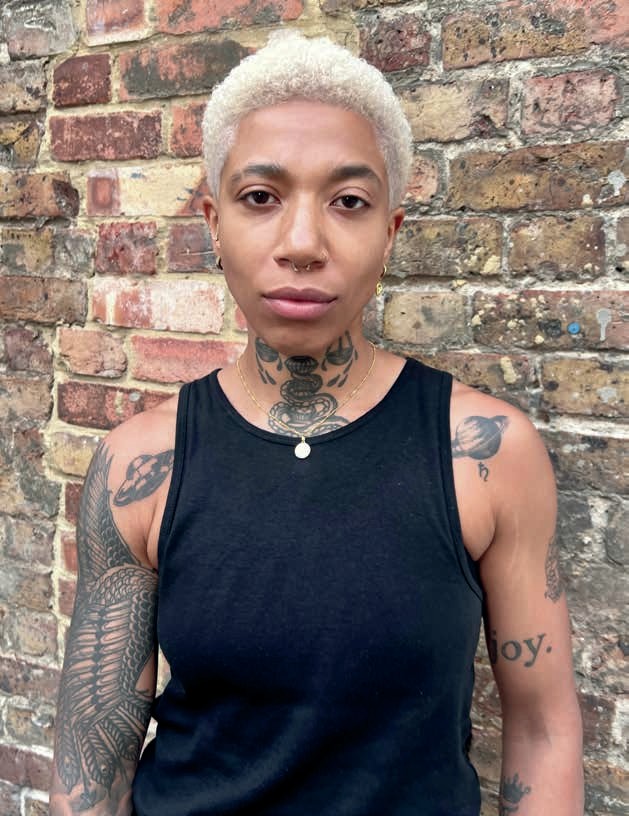WHITE HOT
Scalp bleach specialist Sarah Louise Keane is spearheading a revival of this challenging technique

Sarah Louise Keane
“When someone has scalp bleaching for the first time, it's such a huge transformation because it's a global colour. People who've always been blonde with highlights think that they're blonde, and then they scalp bleach, and it's a complete next level. I just fell in love with that.”
Sarah Louise Keane understands the power of scalp bleaching. Its edgy beauty, its “look at me now” ties to punk, grunge and (now) pop, to someone’s willingness to rebel, to evolve or to completely abandon the person they once were. Platinum creates conversation, discussion and theorising around going blonde and what it means. In the end, it’s a big change, a chance to reinvent, and it’s on the client’s own terms.
On the other hand, scalp bleaching is one of the more challenging colour services, fraught with dangers such as chemical burns, contact dermatitis and patchy results that no amount of toning can rectify. Its high-risk status is why it had become an almost forgotten technique with little or no education around it, until Sarah Louise, whose first attempt with scalp bleaching resulted in her client losing her hair and she almost losing her job (“I’d been told to apply it like a tint; I’d slapped it on in 20 minutes”), decided to investigate further.
“I started piecing things together,” she said. “I did a lot of hair for free, and then I moved to a salon in Manchester where they offered scalp bleaching and every time I did it, if I made a mistake, which a lot of the time I did, I would trace things back to try and figure out what it was that I'd done wrong. I kept doing that. I got better. I got more confident. And then I moved to London, because I got a job at Bleach, working among these super-talented people, and before I knew it, I was doing doing around 25 scalp bleaches a week.”
After almost seven years at Bleach, Sarah Louise returned to her native Manchester and “I quickly realised how sheltered I had been in that salon around people who were confident with scalp bleaching, who were really good at it. Back in the regular hairdressing world, that didn’t exist, so I decided I needed to educate people. I got my qualification in education and training and at my firstever class seven students turned up. When it finished, I just thought, ‘Oh my God, I can’t wait to do that again’.”
Today, Sarah Louise’s Scalp Bleaching 101 classes regularly sell out (she has a wait list of more than 200 for her next one in September), showing just how much she has single-handedly revived the art of scalp bleaching. “The difference between highlights and scalp bleaching is huge, and I’m very open and honest about the fact that I’ve made mistakes and that I still make mistakes now,” she says. “I think it’s really important for hairdressers to hear that”.
With more than 100k followers on Instagram, social media has been key to growing her education business and, indirectly, her client base. “The goal with social media was never to attract clients, it was to speak to hairdressers because I knew I had to change their mind on what they thought they knew about scalp bleaching – that it’s dangerous, that we shouldn’t be doing it. I knew that the easiest way for me to shift that narrative was through social media. But I guess the buzz around what I was doing attracted clients, too.”
With a wide-ranging client demographic – the youngest is 21, the oldest in her 50s – it’s clear that Sarah Louise’s scalp bleaching revival is in full swing. So, does it fulfil her creative urges? “Some people would say that all my clients look the same, because they’re a global blonde. But I can see the differences – her hair looks slightly more blue, her hair looks slightly more pink and there’s an undertone of gold in that one. But then again, I’m a purist!”
@slkbleachexpert